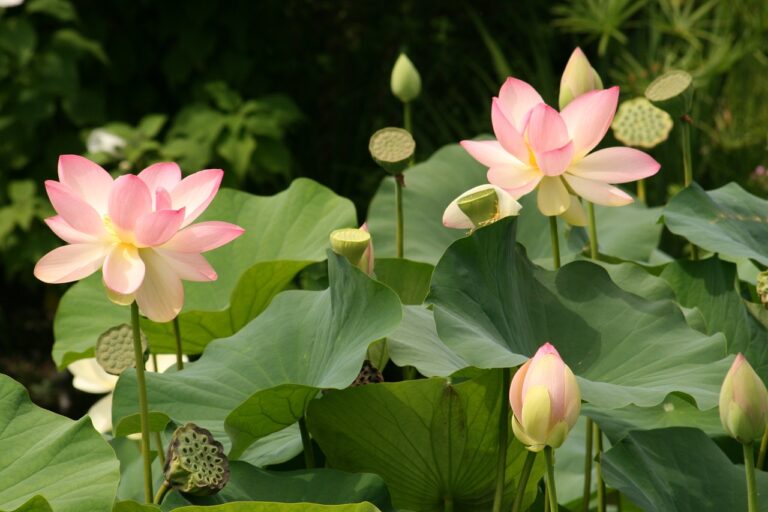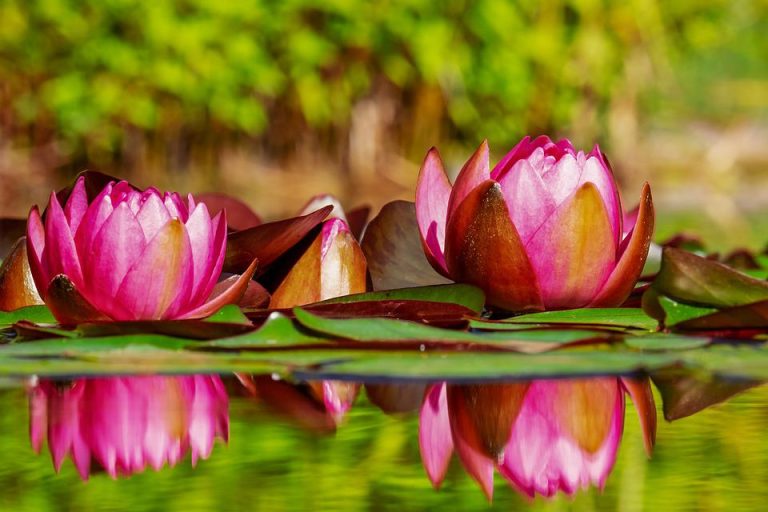Starting a Tub Garden: A Step-by-Step Guide
To create a miniature water garden in a tub with water lilies and other aquatics for your sunny deck or patio, follow these simple steps.
Materials
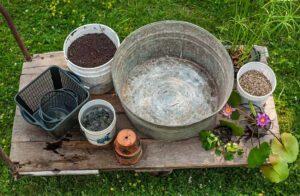 Watertight Basin.
Watertight Basin.
For your new water garden, consider using a half whiskey barrel, vintage bathtub or sink, concrete trough, or galvanized livestock tank as a planting basin. Choose a basin that is 12 to 15 inches deep and 24 to 36 inches wide to give your plants ample room for growth.
If you plan to have fish, consider if your water is chlorinated. If it is, then fill the tub and wait about a week before adding fish and other aquatic animals. Plants have been watered with chlorinated tap water, thus the plants should be okay without waiting for the chlorine to dissipate.
Clayey Topsoil
When choosing topsoil, select a heavy, clay-rich one rather than a lightweight potting soil. It should not contain pieces of wood or vermiculite that will only float away.
Aquatic Crates
These plastic crates feature lattice sides that allow plant roots to grow into the water, exchanging gases and nutrients. Select a crate size that fits the plant’s size and type.
Granular Aquatic Fertilizer
For healthy plants and to enhance plant growth, fertilize your aquatic plants on schedule. Note that they will start to go into winter hibernation later in the year. When they start, then fertilizer should be cut back otherwise it’ll go to waste and may feed unwanted organisms.
Pea Gravel
To avoid altering the soil’s alkalinity, use pea gravel instead of crushed limestone to hold the soil in place.
Bricks to Raise Plants
Place bricks under the water crates to adjust the water to the desired depth. Ceramic pots can also be used to lift the plants to the recommended depth. Avoid using wood that can decay while sub
Recommended Aquatic Plants
This list is a recommendation and you can adjust the plants per your preferences.
Water lily. For the most abundant blooms, select a day-blooming tropical water lily like our ‘Pink Platter,’ which thrives in containers. Or, choose a night-blooming tropical variety to enjoy flowers from late afternoon into the evening.
Oxygenator. Submerged aquatic plants such as fanwort (Cabomba caroliniana) help purify water and oxygenate it.
Floating plants. Water hyacinth (Eichornia crassipes) and other floating plants act as a protective cover for fish while also shading the water to inhibit algal blooms.
Bog plants. Growing 3-5 feet tall, the umbrella palm (Cyperus alternifolius) is an excellent choice for adding height to a water container garden. Papyrus and colocasia are other tall options worth considering.
Fill Your Tub and Add Soil to Containers
Keep the roots of your plants moist during the preparation. Before filling the crates, add granular fertilizer to the topsoil — growing aquatic plants requires a lot of nutrients. Once filled with soil, fill the basin and add water as necessary.
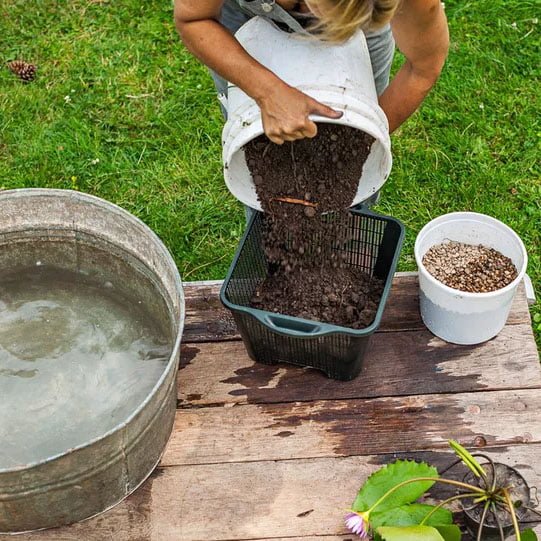
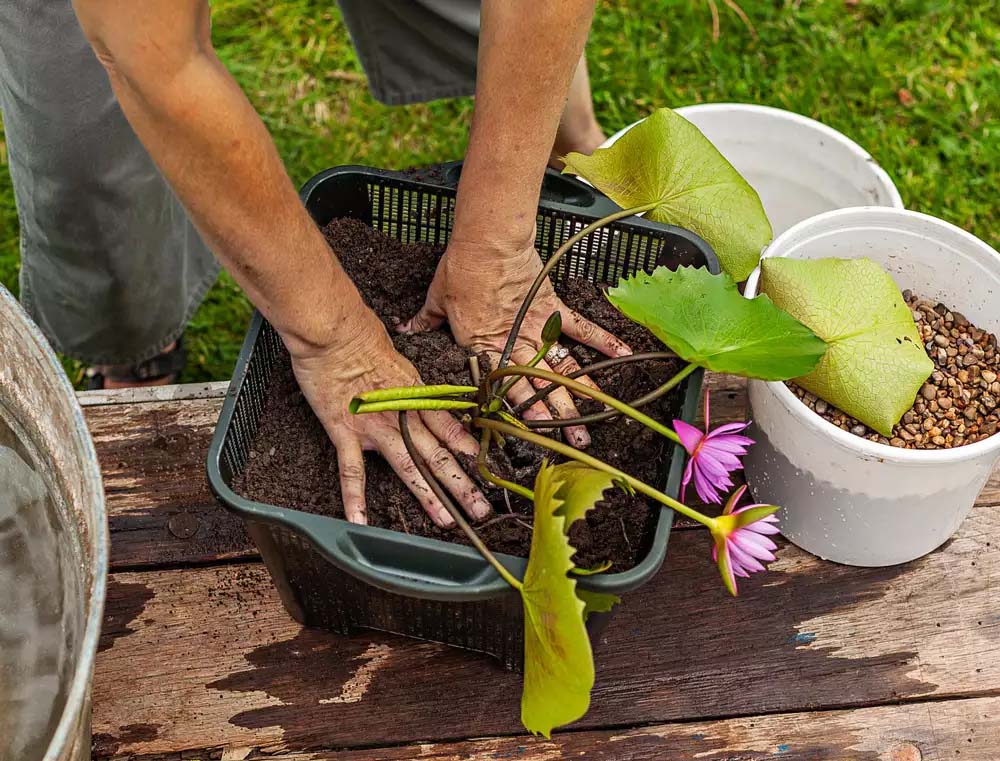
Plant Your Water Lily
In a 9-inch square crate, dig a hole in the soil. Plant the water lily in the hole. Add water to the crate and firm the soil around the water lily plant to support it. Do not let the roots dry out otherwise the small fibers may not survive.
Add Pea Gravel to Hold the Soil Down
So that the soil doesn’t drift away, add about 1/2″ pea gravel or small stones on top.
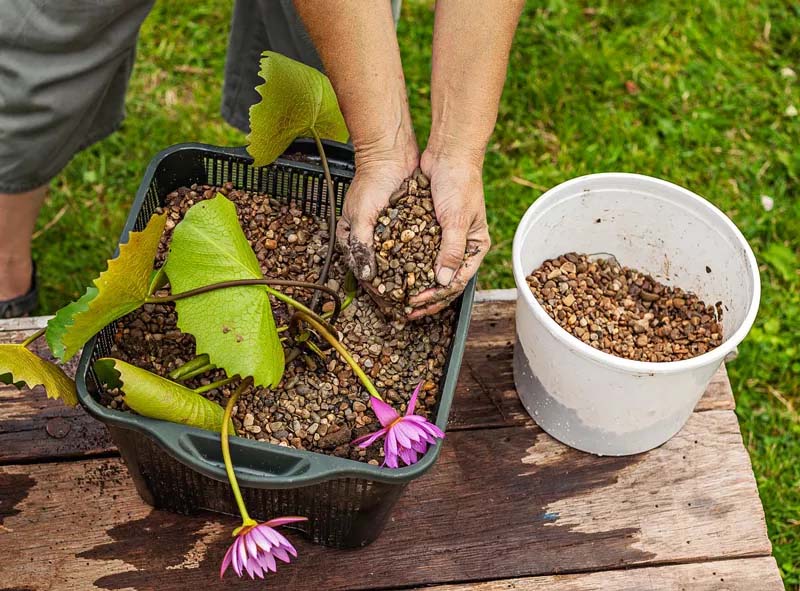
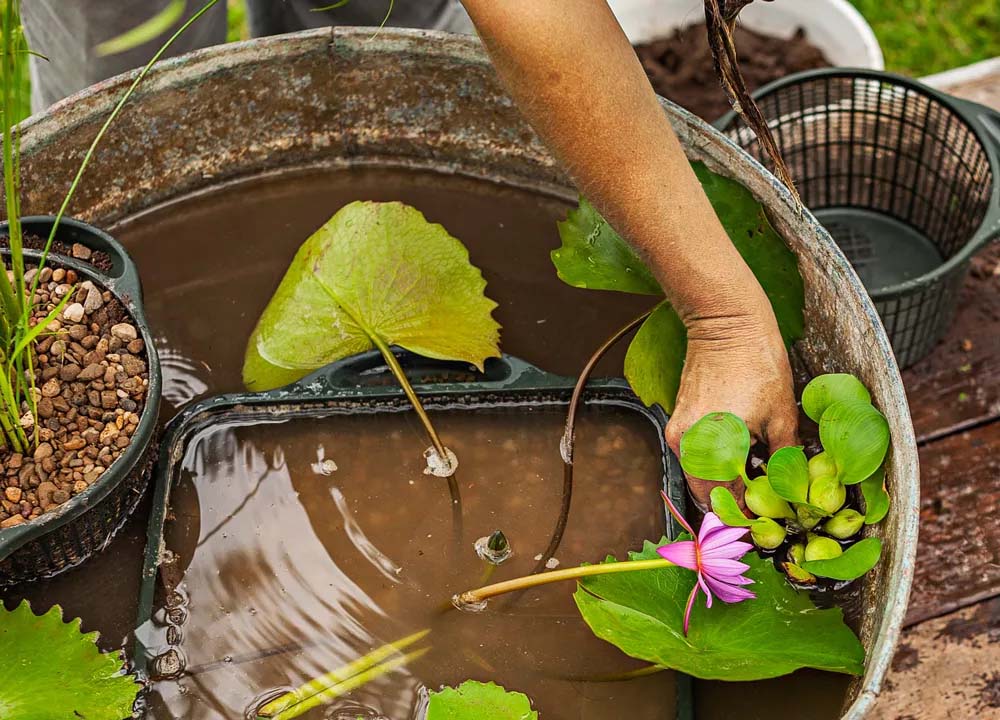
Carefully Submerge the Plant into the Water
Ensure that the soil and gravel doesn’t flow out of the container as you submerge it. The top of the container should be at the recommended depth below the water’s surface. Here, the tub will be filled to the top with water after everything is in place.
Add More Aquatic Plants of Different Styles.
To plant the umbrella plant, place it in an 8-inch circular container. Submerge the top of the container 1 inch under the water’s surface. Use bricks to raise the crate to the recommended level below the water’s surface. Here, a ceramic pot is used to raise the plant.
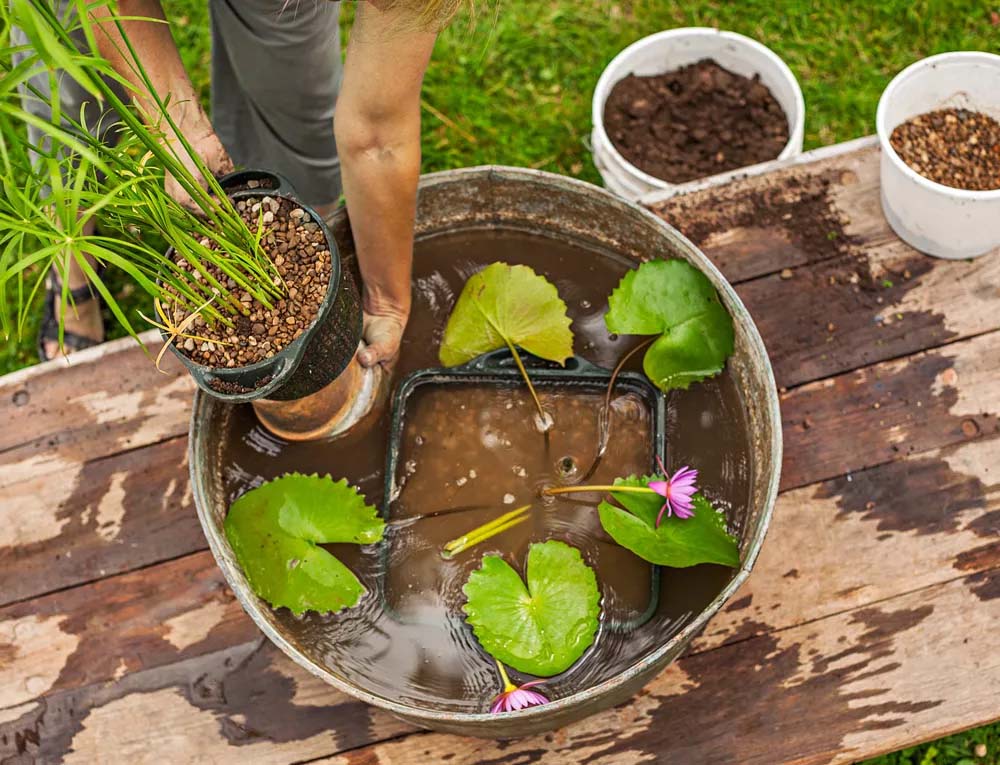

Adding Smaller Plants
You can add smaller aquatic plants such as water hyacinths to fill the area for a spectacular display when they grow.
Fill the Tub Garden
After all the plants are in the tub, fill it with fresh water to the top. Be careful to not stir the soil and gravel on top. You may see algae blooms but they will die out within a week or so.

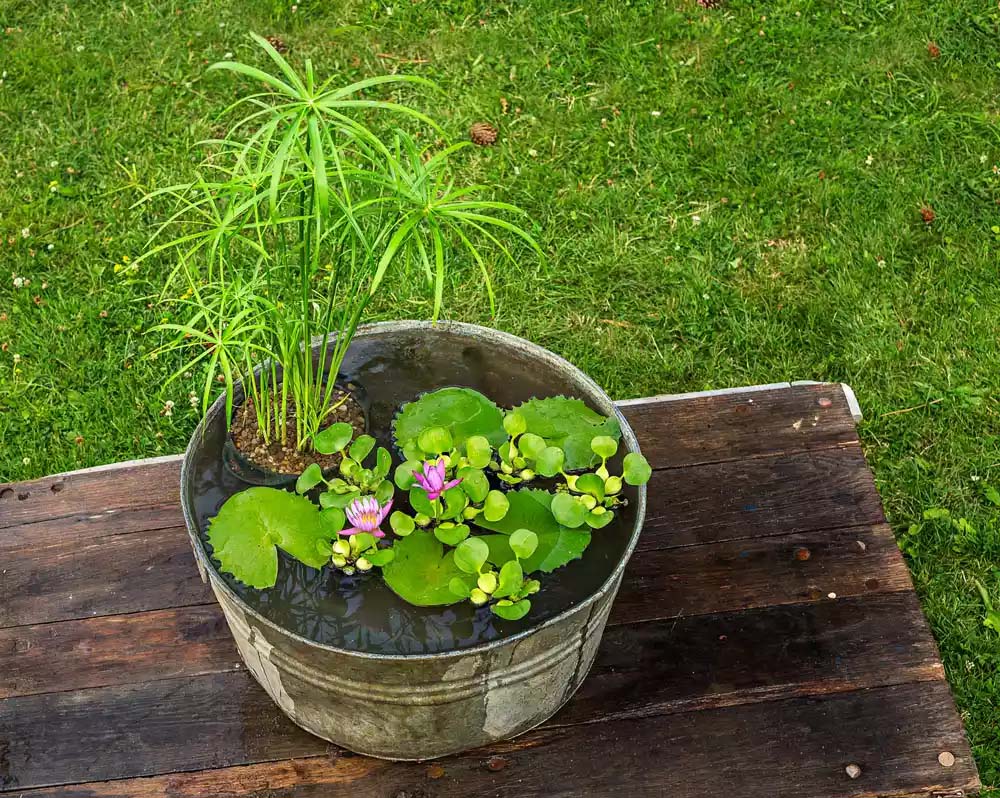
Place in a Sunny Location
Place the water container garden where it will receive at least six (6) hours of direct sunlight daily. To maintain your new water garden, weed and prune the aquatic plants as needed, particularly any aggressive floating varieties.
If you’re in an area prone to mosquitoes, then consider periodically adding mosquito dunks per instructions. Mosquito Dunks and Mosquito Bits consist of Bacillus thuringiensis israelensis. Both mosquito dunks and bits do not harm humans, pets, or beneficial insects like bees.


